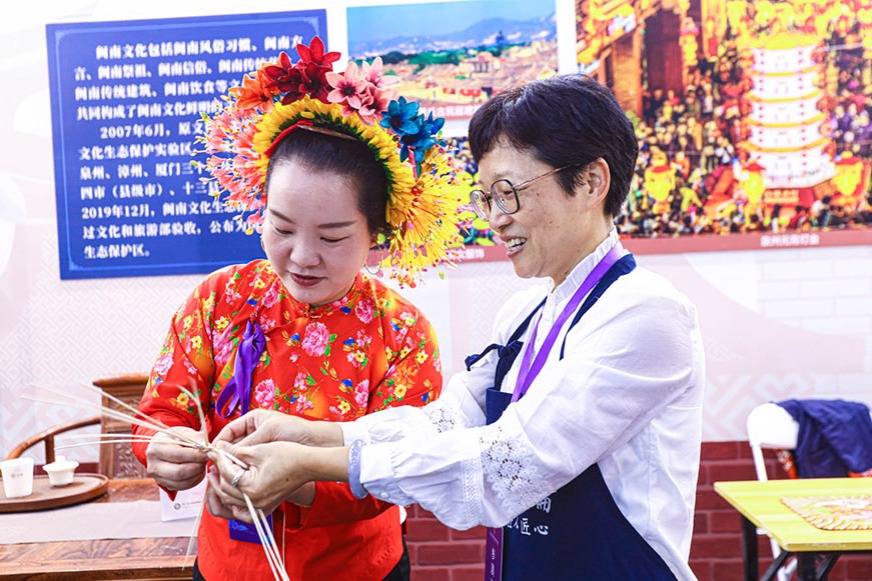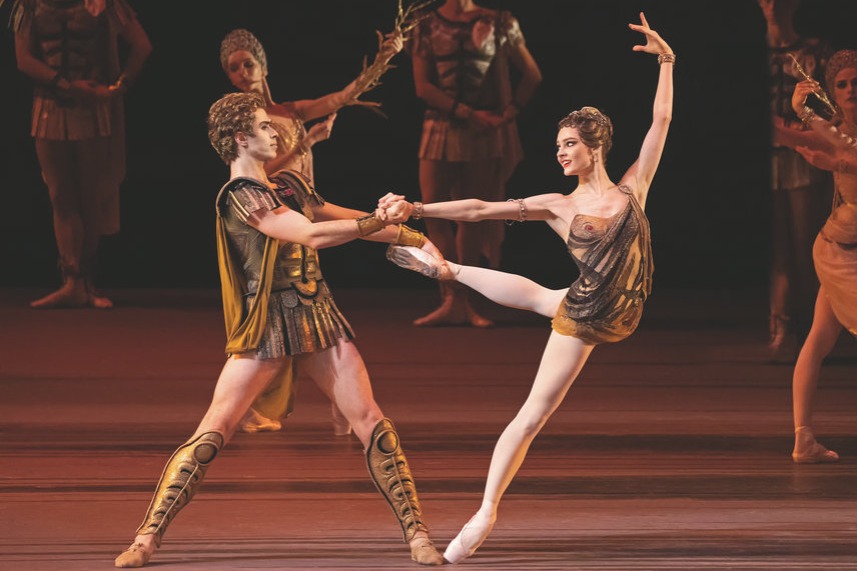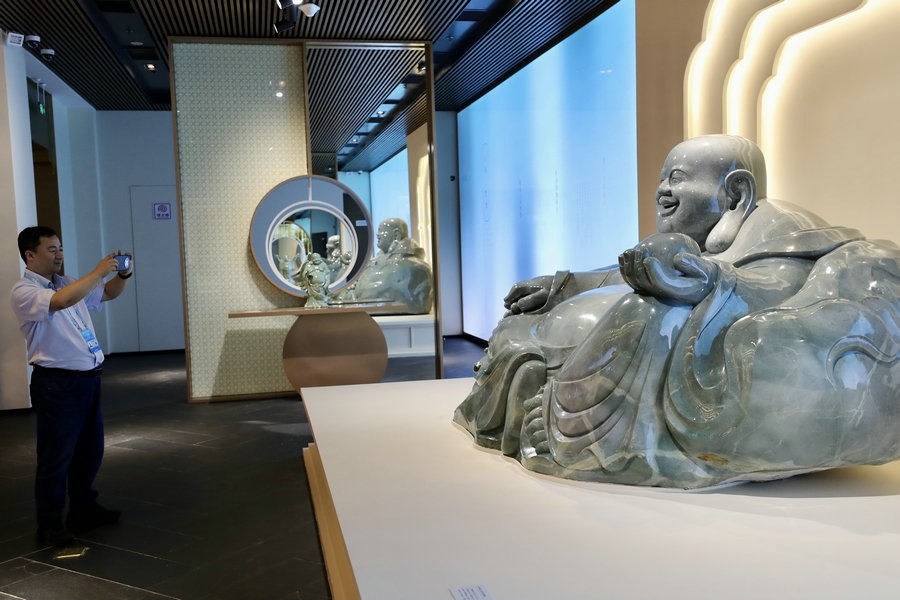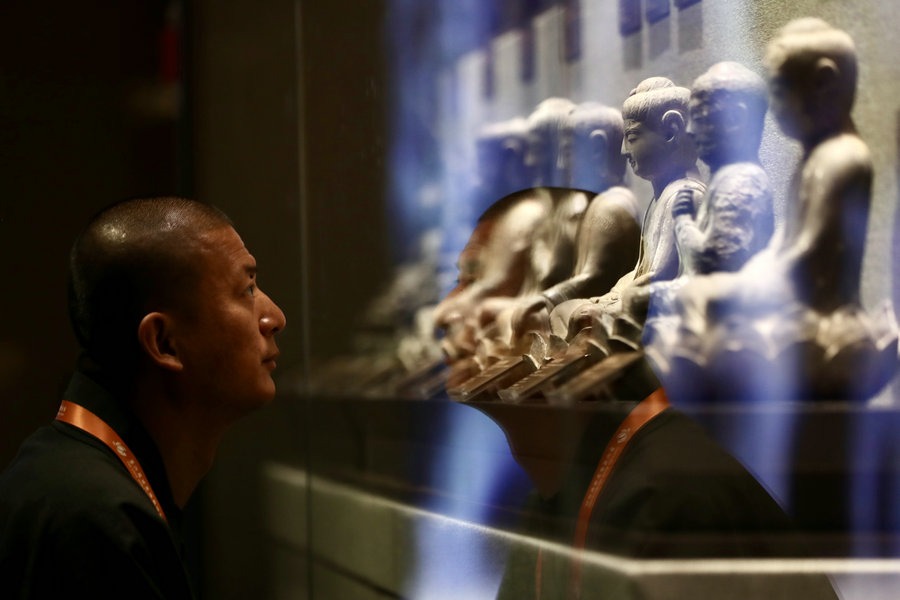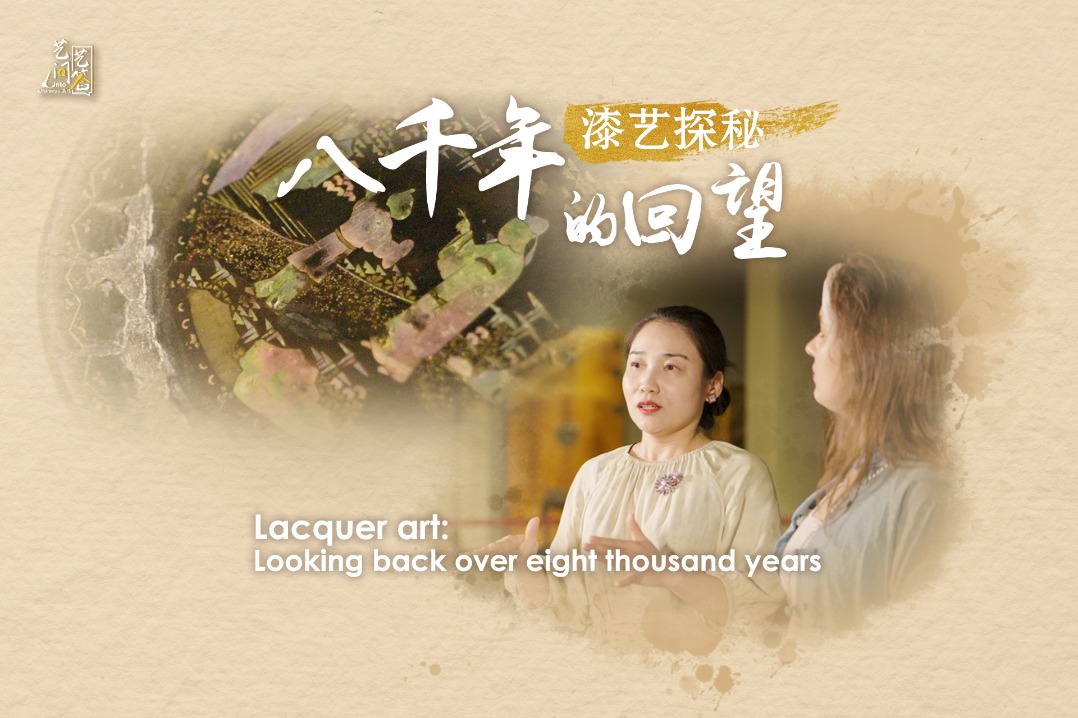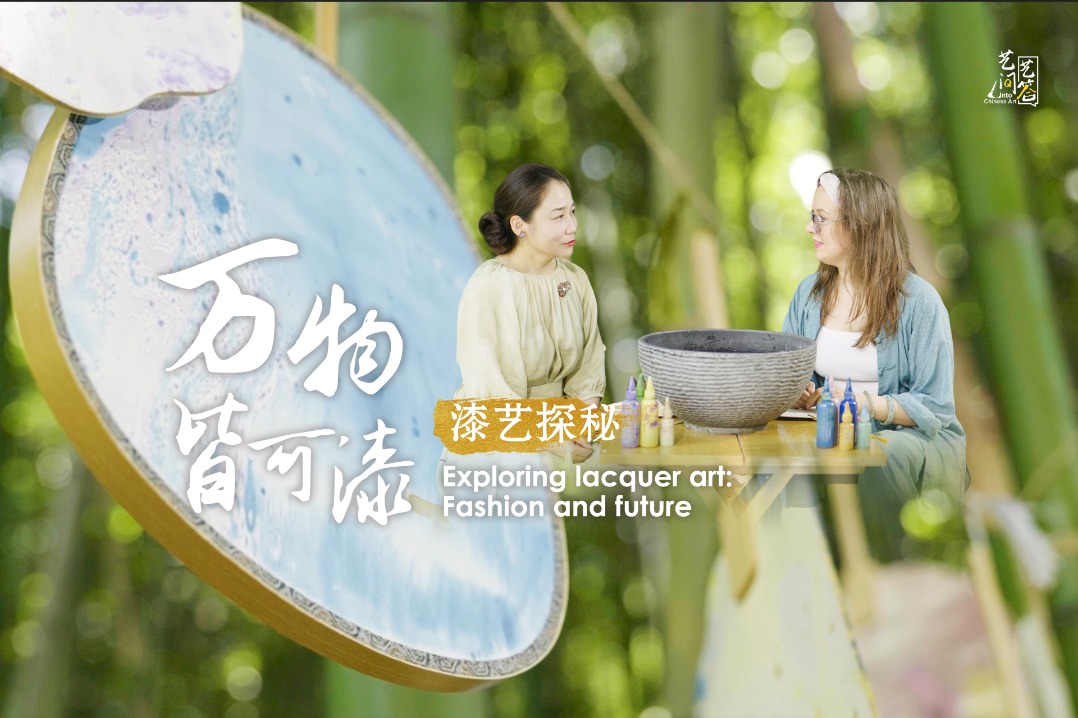Italian painter's work for Chinese emperor inspires sculptures of dogs


In the 18th century, Italian missionary Giuseppe Castiglione, who was an artist for three emperors in the Qing Dynasty (1644-1911), drew a series called The Ten Prized Dogs for emperor Qianlong, who had lots of hunting hounds.
The dogs from the paintings are now sculpted into a porcelain work to mark the Year of the Dog of the Chinese lunar calendar.
Sculptor Chou Hanyu designed the work featuring the dogs for Franz Collection, a Taiwan-based porcelain brand.
The 10 dogs, including a Tibetan mastiff, were sculpted as if they were in the paintings and placed on a field against mountains and trees.
It took Chou and his team eight months to finish the artwork, and 100 limited editions have been produced.
"It was a big project to put all these dogs together," says Chou, explaining that to decrease the failure rate they have to do the dogs' tails and ears separately.
Each dog in the work has a collar with a bell-the bells helped the emperor find the prey.
Chou was inspired to do the sculpture when he saw the Ten Prized Dogs series at the Palace Museum in Taipei.
The dogs were painted 200 years ago by Castiglione, who created lots of well-known pieces by infusing European and Chinese painting styles during his tenure with the emperors.
Nine of the 10 dogs are hounds with long and thin legs and bodies, while the last one is a gigantic Tibetan mastiff.
Many of the dogs were named after mythical beasts. There was yellow leopard, mottled tiger and even black dragon. The mastiff was called heavenly lion.
Chou says he has a special connection with canines, as he was born in the Year of the Dog in 1970.
Although he was bitten by a dog when he was a child, he still loves the animals.
But he does not own one.
His friends love to leave their dogs with him when going out on trips. And it is common for him to take many dogs for a walk at the same time.
The current project is not the first time that Chou and his team from Franz have taken inspiration from traditional Chinese paintings to turn them into sculptures.
Last year, one of Castiglione's paintings featuring eight horses was made into a sculpture. And the well-known Qingming Shang He Tu (Riverside Scene at the Qingming Festival) by Northern Song Dynasty (960-1127) artist Zhang Zeduan depicting life in a city was also recreated as a porcelain work.
Lee Kuangyuh, a designer and Chou's colleague, says porcelain is a traditional medium to promote Chinese culture. They find inspiration from history and combine it with their own thoughts to create new works.
Meanwhile, Lee's work featuring dragons is based on a classical painting at the Taipei Palace Museum.
In the work, he combines the painting with a concept from sci-fi writer Liu Cixin's Three-Body Problem.
The three dragons represent the past, present and future.




















